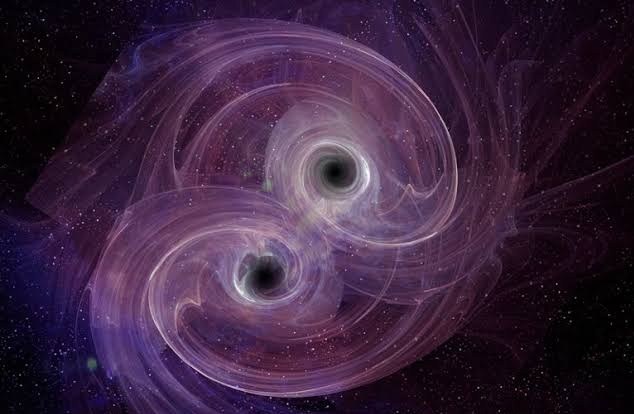Black holes may hold secrets of early universe

Black holes weighing as much as thousands, millions or even billions of suns sit at the center of nearly all known massive galaxies
Milkyway galaxy’s heart is a gluttonous monster and it’s not alone. Black holes weighing as much as thousands, millions or even billions of suns sit at the center of nearly all known massive galaxies.
For decades, scientists thought that was the only place they’d find such behemoths, because only massive galaxies had enough material to feed the monsters’ excessive appetites. But beginning about two decades ago, computer simulations of the earliest black holes started turning up oddities — big black holes that weren’t smack-dab where they were expected. These misfits must be nothing more than flukes, many scientists reasoned at the time, dismissing the results without a second thought.
But others weren’t so certain the oddballs should be cast off. If observations show that these unusual black holes exist in the nearby universe, these astrophysicists speculated, they could be untapped clues to the universe’s infancy and adolescence.
“We can learn about the super-beginning of the universe by looking at things really close to us,” says theoretical astrophysicist Jillian Bellovary of Queensborough Community College in New York City
The notion remained just an idea for years. But now, the existence of these misfits isn’t so easy to ignore. Astronomers have turned up signs of a number of unexpectedly massive black holes in the universe’s tiniest galaxies, and surprisingly, some of those black holes don’t appear to sit at their galaxies’ centers. Even more intriguing, astronomers have spotted evidence of black holes wandering at their galaxies’ edges, and in rare cases, being kicked from their homes into intergalactic space.
Perhaps these aren’t merely cosmic nonconformists but instead big players in the story of our universe. If so, they are a tool for probing one of the greatest mysteries in all of astrophysics — how the cosmic Kammapas we see today came to be.
“Without understanding what black holes are doing, you cannot understand galaxy evolution,” says Xiaohui Fan, a cosmologist at the University of Arizona in Tucson, making it impossible to explain the landscape of the universe.
Our current cosmological understanding of how black holes got so big goes something like this: As galaxies grow, collide and merge over cosmic time, they take on gobs of new stars, gas and dust. The black holes at the galaxies’ centers grow in lockstep, ballooning as they merge with one another and feed on the newly acquired material. A rough estimate puts a supermassive black hole’s heft at somewhere around a thousandth of the mass of its home galaxy.
In this scenario, the universe’s littlest galaxies, called dwarf galaxies, probably didn’t go through many mergers in the past. Tipping the scales at only about a trillionth the mass of the Milky Way, they should have relatively runty black holes, or none at all.
But in the late 2000s, astrophysicist Marta Volonteri of Institut d’Astrophysique de Paris at Sorbonne University helped run computer simulations that tracked the evolution of massive black holes from birth to today. In those efforts, almost as soon as they popped into existence, even the smallest galaxies could have surprisingly large black holes. As time passed, some of those galaxies never grew or merged with others, leaving them unmarred after billions of years of cosmic evolution.
When you fall into a black hole you will be literally spaghettified. Brain Cox
A wild idea occurred to Volonteri and her colleagues: These galaxies and their black holes were relics of the universe’s birth. If massive black holes in dwarf galaxies did exist, and if astronomers could find them, those would be an unprecedented window into how the first black holes formed.
The first hints that they do exist came from a serendipitous find by astronomer Amy Reines. More than a decade ago, she was in graduate school at the University of Virginia in Charlottesville poring through telescope data on a dwarf galaxy 30 million light-years from Earth. It was bursting with stars, and Reines was trying to learn more about how these balls of hot gas are born.
Initially Reines looked at data from the galaxy, called Henize 2-10, in radio and near-infrared wavelengths of light. She spotted a cosmic baby rattle, a roughly 300-light-year-long bridge of gas connecting two dusty balls swaddling newly coalescing stars. A deeper dive into the data revealed extreme radio emissions right in the middle of the rattle, along with bright X-rays coming from the same spot, inklings of a huge black hole with a mass of a million suns.
“I hadn’t seen this before,” says Reines, now at Montana State University in Bozeman. Dwarf galaxies, she too had assumed, shouldn’t have big black holes. She remained skeptical of her interpretation until a few months later when she attended a talk in Seattle at the 2011 American Astronomical Society meeting.
It is hard to think of practical applications of the black hole. Because practical applications are so remote, many people assume we should not be interested. But this quest to understand the world is what defines us as human beings. Yuri Milner
It was there that Bellovary, then a postdoctoral researcher at the University of Michigan in Ann Arbor and collaborating with Volonteri, presented new simulations of galaxy formation. Bellovary described the formation of galaxies with a range of masses and histories, and discussed how the results could make predictions about how massive black holes are scattered throughout the universe.
Like Volonteri’s earlier work, Bellovary’s simulations suggested that big galaxies were not the only ones to harbor big black holes; scrawny galaxies could have them too.In a session at the same meeting, Reines highlighted her discovery of dwarf galaxy Henize 2-10 and its uncharacteristically massive black hole. Like two black holes circling each other and then colliding, unexpected computer simulations met unexpected real-world observations.


